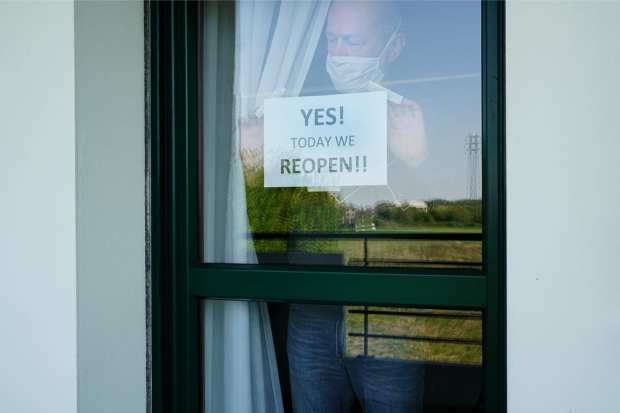Generation House Arrest? Retailers Anticipate Reinvention And Reopening

Friday, May 1 is shaping up as one of retail’s most important days since the COVID-19 crisis went down. It’s that day that several states, and now the federal government, have set as an unofficial day to begin reopening the economy. The pressure on cash-strapped retailers is intense and potentially consequential.
At stake are the early returns on some issues that will determine the nature of consumer behavior and spending patterns, which are the lifeblood of retail for any season. As reported in the PYMNTS COVID-19 tracker just a week ago, consumers are willing to wait out their social exposure until they feel it’s safe to do so. And safety, the report found, is defined by the development of a coronavirus vaccine and could last to October.
Perspectives and events that took place over the weekend and this morning reinforce those PYMNTS findings.
“If The Great Depression produced The Silent Generation, who carried a mindset of scarcity throughout the rest of their lives, then I propose “The Great Lockdown” will produce “Generation House Arrest,” and they will have a mindset of avoiding physical human contact and crowded places, compounded with scarcity,” says online real estate newsletter Propmodo. “If so, retailers will see a decrease in time spent in brick and mortar stores and an acceleration in online shopping—a trend that began before the pandemic now drastically propelled forward. Retailers who have created strong omnichannel infrastructures are poised to do well in the aftermath because they can accommodate changing consumer needs more easily.”
Several reports produced over the weekend and Monday contained “panic” headlines and desperate attitudes. Exactly who that would serve is unknown. Retailers will need sharp planning and level heads as the reality of reopening presents itself. Another PYMNTS report, this one released today, reinforced that need to reinvent rather than strike the tents.
“The challenges of reigniting the economy after nearly two months of a near-total shutdown of the physical world, and probably a longer partial shutdown, is a lot like the ones faced by an entrepreneur with a platform business that she wants to ignite and scale,” wrote PYMNTS CEO Karen Webster. “It requires identifying the key stakeholders, understanding their interdependencies and then devising a strategy to build critical mass on all sides while aligning supply with demand. It requires a realistic appraisal of the frictions associated with stakeholder interactions, how businesses will reduce or eliminate them and which stakeholder group is most critical to getting the flywheel moving.”
Reinvention as the keyword for reopening will require new thinking. For example, Mark A. Cohen, director of retail studies and adjunct professor at Columbia Business School, warned against business as usual. “Post pandemic, stores have to quickly repatriate their furloughed organizations and create an immediate now and future operating strategy to navigate recovery; adopting a ‘same old same old’ strategy could be a terrible mistake,” he said, as reported by Forbes.
Larger retailers may need to look at reformatting as a reinvention strategy. “Looking at the long-term changes retailers expect to make, many executives say they are reevaluating their footprints,” says an April 24 survey conducted by McKinsey. “Approximately one-third of respondents report that they are considering not reopening underperforming stores, and a similar share say that they might pause plans to open new stores. While the surveyed retail executives in most segments do not foresee long-term changes to store formats, about three-quarters of apparel executives say they plan to improve online integration at their stores.”
